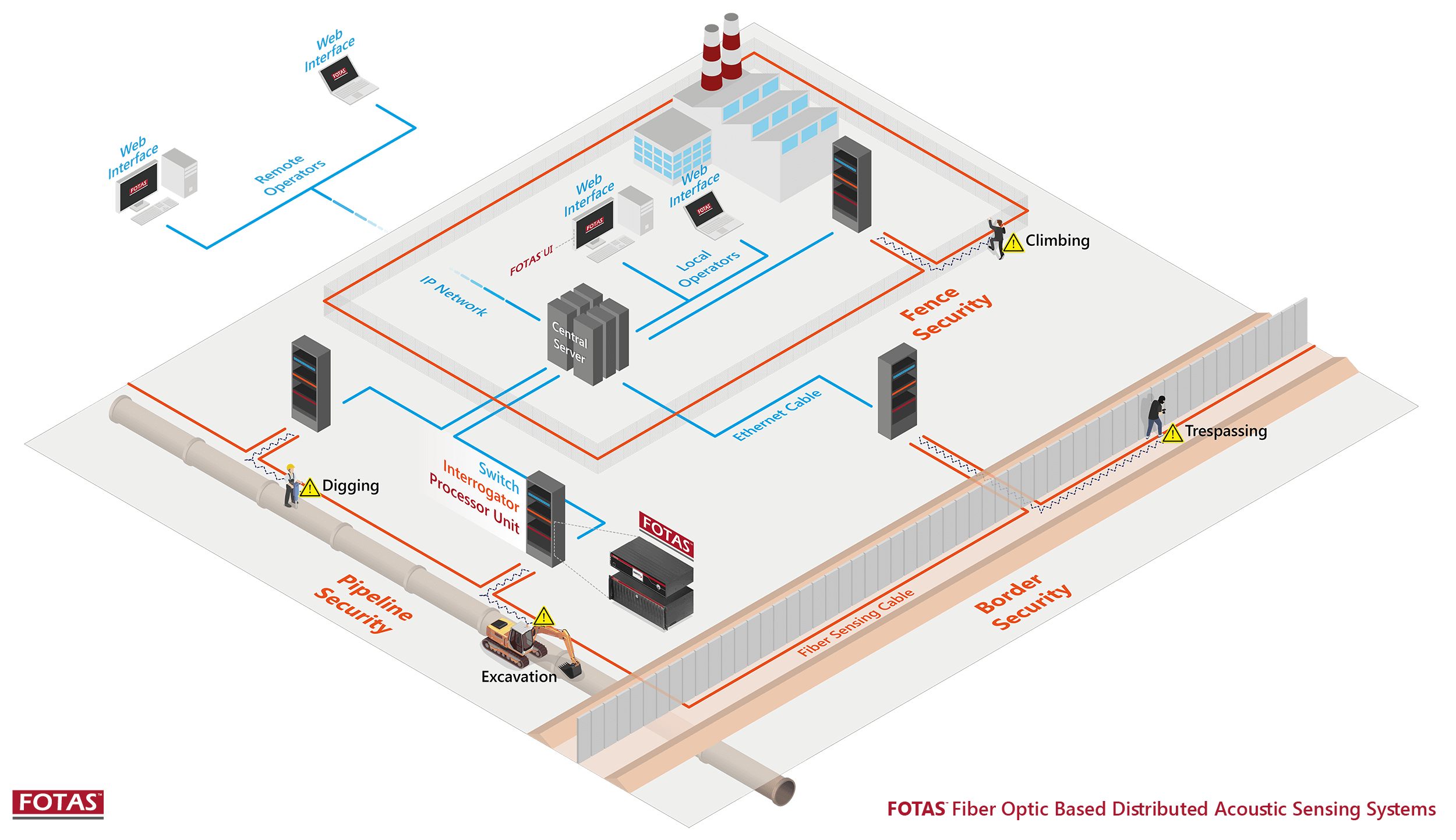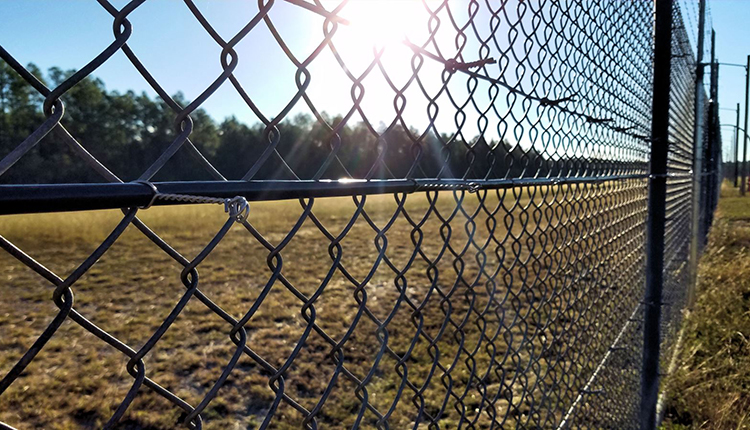Integrating a Fiber Optic Security System into Existing Security Setup for Enhanced Performance
Integrating a Fiber Optic Security System into Existing Security Setup for Enhanced Performance
Blog Article
Secure Your Building With Trustworthy Fiber Optic Safety And Security Solutions
In an era where security risks are progressively sophisticated, the need for reliable defense options is critical. Fiber optic safety systems stand out by offering phenomenal dependability and performance, leveraging innovative light transmission modern technology to enhance surveillance abilities. These systems not just provide immunity to electro-magnetic disturbance but likewise guarantee long-lasting expense effectiveness through lowered maintenance needs. The decision to spend in such a solution entails cautious factor to consider of various aspects. Recognizing the intricacies of fiber optic safety and security can brighten the course to protecting your home better. What facets should be checked out to optimize your investment?
Benefits of Fiber Optic Safety
Fiber optic safety options offer a variety of benefits that make them progressively crucial in today's digital landscape. Among one of the most considerable advantages is their remarkable data transfer ability, which permits the transmission of large quantities of information over fars away without significant signal destruction. This ability is especially beneficial for security systems that rely upon high-def video surveillance and real-time monitoring.
In addition, fiber optic cable televisions are inherently much more protected than traditional copper wiring. They are immune to electro-magnetic interference, making them much less susceptible to hacking or eavesdropping. This improved security is crucial for securing sensitive data and maintaining the integrity of security systems.
Moreover, fiber optics are extra durable and immune to environmental factors, such as dampness and temperature level variations, ensuring long-lasting dependability and decreased maintenance prices. The lightweight nature of fiber optic cables likewise streamlines installation procedures, enabling better versatility in system design.
Exactly How Fiber Optic Systems Work
In modern safety applications, the operation of fiber optic systems depends on the principles of light transmission via adaptable glass or plastic fibers. These fibers are created to bring light signals over long ranges with marginal loss, making them suitable for transferring data associated to safety surveillance. The core of the fiber, bordered by a cladding material, ensures that light signals stay included within the core through a sensation recognized as overall interior reflection.
When integrated into security systems, fiber optic cables can transfer information from numerous sensing units, such as video cameras, motion detectors, and alarms, to a main monitoring station. The high data transfer ability of optical fiber permits the transmission of big quantities of data at the same time, allowing real-time monitoring and punctual feedback to possible risks.

Sorts Of Fiber Optic Safety Solutions
Numerous types of fiber optic safety and security services have actually emerged to improve surveillance and protection throughout different atmospheres. One famous option is fiber optic border invasion discovery systems (PIDS), created to keep an eye on and safeguard property borders via the detection of vibrations and disruptions along fiber optic cables. These systems give real-time notifies, enabling punctual actions to unauthorized gain access to efforts.
Another reliable service is fiber optic video clip surveillance. This innovation leverages high-definition video cameras connected via fiber optic wires to send video data websites over fars away without substantial loss of quality. This arrangement is specifically advantageous in extensive locations, such as airport terminals and commercial websites, where standard copper cables may falter.
Furthermore, fiber optic sensing units are significantly utilized for ecological tracking, detecting changes in temperature, pressure, or acoustic signals that might suggest safety and security breaches or harmful conditions. These sensing units offer high level of sensitivity and accuracy, making them ideal for essential framework security.

Installment and Upkeep Tips
Effective setup and maintenance of fiber optic safety and security solutions are essential for guaranteeing their optimal efficiency and durability. Fiber optic wires ought to be routed safely, preventing sharp bends or spins that can compromise their stability.
During setup, it is advisable to carry out detailed testing of the system to confirm that all elements are functioning appropriately. Normal upkeep checks need to be set up to inspect the fiber optic wires for any type of signs of wear or damage, as well as to guarantee that links remain protected. Cleansing the adapters periodically is additionally vital to prevent signal loss due to dust or debris.
Furthermore, keeping an updated inventory of mounted components and their requirements can facilitate simpler troubleshooting and upgrades. By sticking to find out this here these installment and maintenance ideas, home proprietors can optimize the effectiveness of their fiber optic safety and security services, guaranteeing a reputable defense against potential dangers.
Comparing Costs and Efficiency
When examining fiber optic safety remedies, recognizing the balance in between prices and performance comes to be paramount (security fibers). Organizations should consider the ahead of time financial investment, recurring upkeep costs, and the lasting value these systems offer. While fiber optic systems may require a higher preliminary installation price compared to standard copper electrical wiring, their toughness and lowered vulnerability to electro-magnetic interference commonly equate to reduced maintenance prices over time
Performance is another critical element; fiber optic safety systems provide improved information transmission speeds and boosted integrity. They can cover bigger distances without signal degradation, making them excellent for large homes or remote locations. Additionally, the high data transfer ability supports sophisticated safety applications, such as high-def video surveillance and real-time monitoring, which are important for comprehensive safety and security monitoring.
Inevitably, the choice in between price and performance must be led by certain security needs and take the chance of analyses. Organizations has to evaluate their distinct requirements, considering elements like home dimension, protection risks, and technical innovations. By performing an extensive cost-benefit analysis, stakeholders can make informed choices that line up with their safety and security objectives while ensuring a sound financial investment in fiber optic technology.
Conclusion
Finally, fiber optic safety remedies supply significant advantages in regards to performance, reliability, her response and immunity to ecological disturbances. These systems enhance surveillance capabilities and perimeter safety and security, making them a reliable selection for thorough security. Although first installation expenses may be greater, the lasting advantages, including lowered maintenance and premium capability, justify the investment. Inevitably, the fostering of fiber optic technology stands for a forward-thinking method to guarding homes against evolving security threats.
Report this page